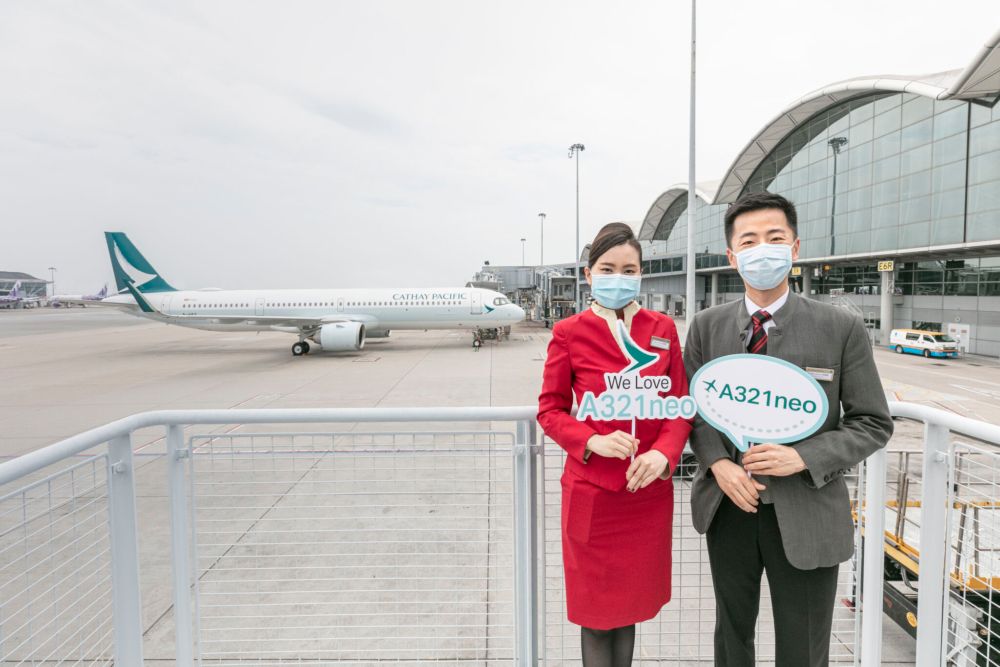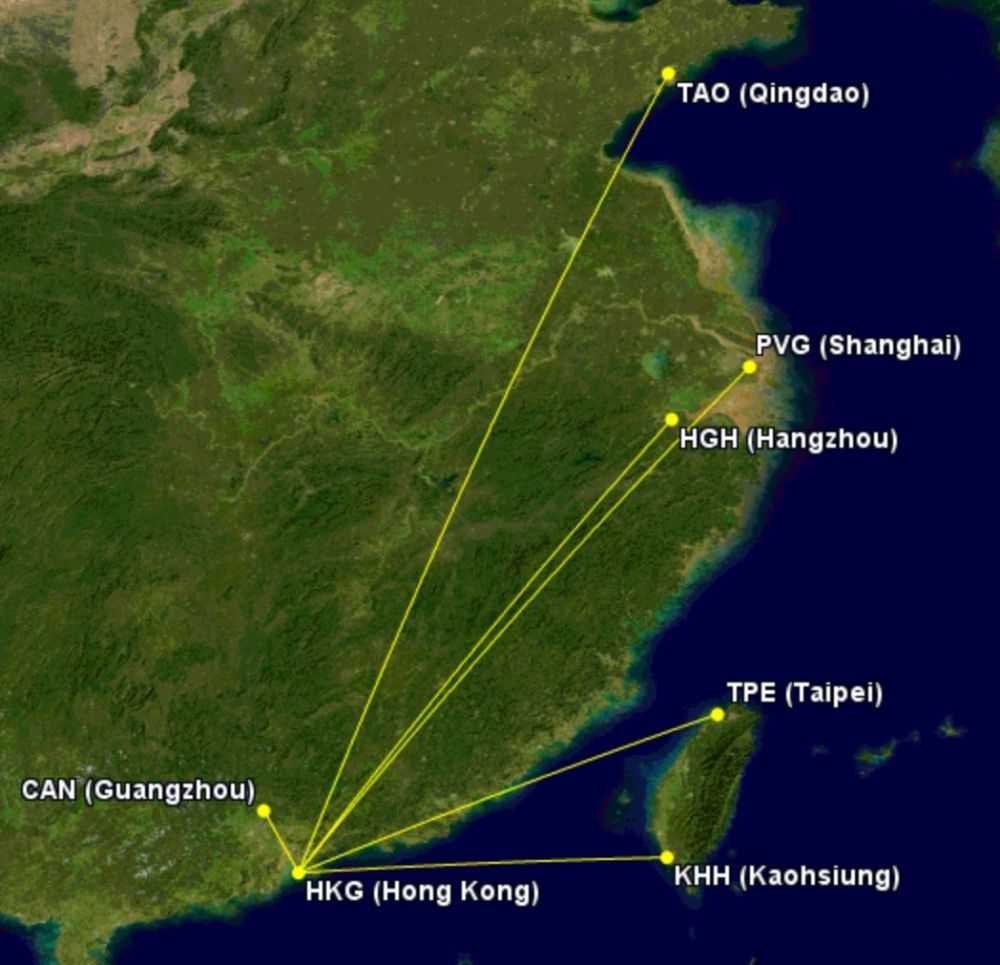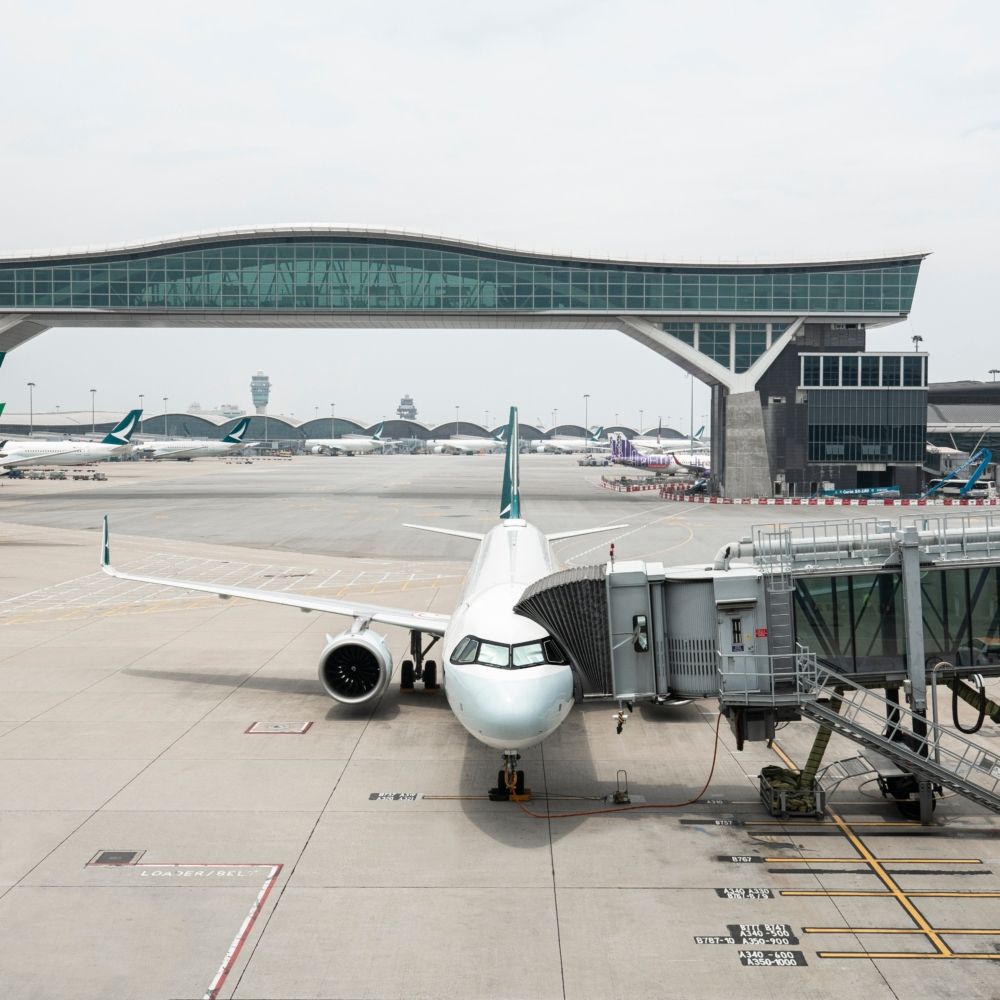Cathay Pacific's first scheduled A321neo flight took off from Hong Kong to Shanghai Pudong on August 4th, followed by a rotation to Taipei later the same day. This was the first time in over 30 years that Cathay Pacific itself had used narrowbodies. We see what destinations are set to welcome the type, at least for now.
Cathay's A321neos
Cathay Pacific currently has two active A321neos, registered B-HPE and B-HPG. While 'Papa Echo was delivered in April this year, 'Papa Golf arrived two months later. These two aircraft are supplemented by two others (B-HPB and B-HPD), neither of which have yet to be used commercially, according to Flightradar24.
Stay aware: Sign up for my weekly new routes newsletter.
All four narrowbodies have been acquired via operating leases, ch-aviation.com shows, with an expected end-of-lease year of 2032 to 2033. These four examples will be supplemented by a further 12 aircraft on order to be delivered by the end of 2023.
Cathay's A321s have 202 seats, complete with 12 in business class and 190 in economy. The type is the first to feature the airline's new regional business class, which we previously examined and found to be very fresh and modern.
Where will the A321neo to be used?
At the time of writing, Cathay's schedule for the type extends only until September 29th, OAG data confirms. Given this, expect multiple new A321 destinations, likely within a five-hour radius, will be announced in the coming weeks.
At the moment, only four destinations will see the type on a semi-regular basis, all within Taiwan and the China mainland, including the 84-mile hop to Guangzhou. This very short flight, in mile terms, has a block time of up to one hour and 45 minutes (!), vividly indicating heavy congestion.
- Kaohsiung: 4,848 estimated seats until 29th September
- Taipei: 1,818
- Guangzhou: 1,414
- Qingdao: 1,414
- Hangzhou: 202 (only on August 5th)
- Shanghai Pudong: 202 (only on August 4th)
What happened to Cathay Dragon?
In the wake of coronavirus, Cathay Pacific's regional subsidiary, Cathay Dragon, formerly Dragonair, ceased with immediate effect on October 21st, 2020. In time, it is expected that most of its routes will be taken over by Cathay Pacific or by HK Express, which Cathay Pacific acquired in July 2019.
Cathay Dragon had 51 routes in 2019, with Pudong, Kaohsiung, Beijing, Kuala Lumpur, and Hangzhou its top-five by seats. It fully replaced its parent to Kuala Lumpur in 2017, showing the respective role of both airlines. In this instance, a lower-yielding point-to-point market with significant low-cost carrier competition, with Cathay Dragon’s lower costs helping performance.
Some 12 of Cathay Dragon’s routes had no head-to-head competition in 2019. While some of these, such as Wenzhou, Penang, and Zhengzhou, are scheduled by Cathay's A330s later this year, it is possible that they may transfer to the A321neo.
Similarly, other former Dragon routes that are no longer served by Cathay Pacific or anyone else, including Changsha, Davao, Guilin, and Niigata, may perhaps one day see the full-service airline's narrowbodies.
Where would you like to see the A321neo being used? Let us know in the comments.




